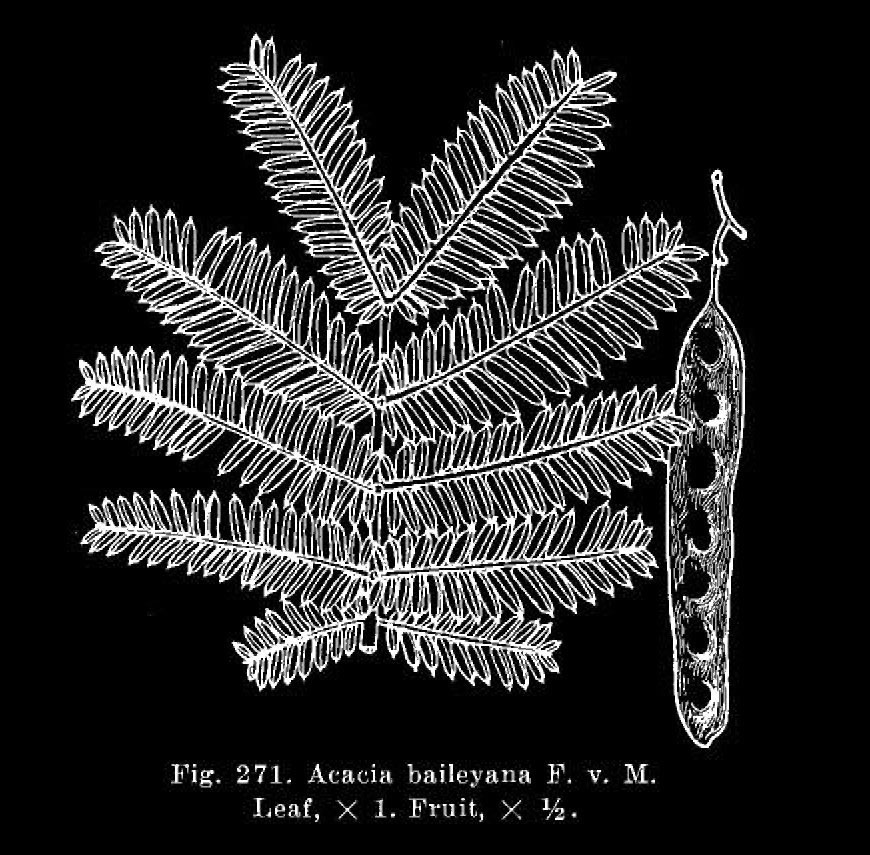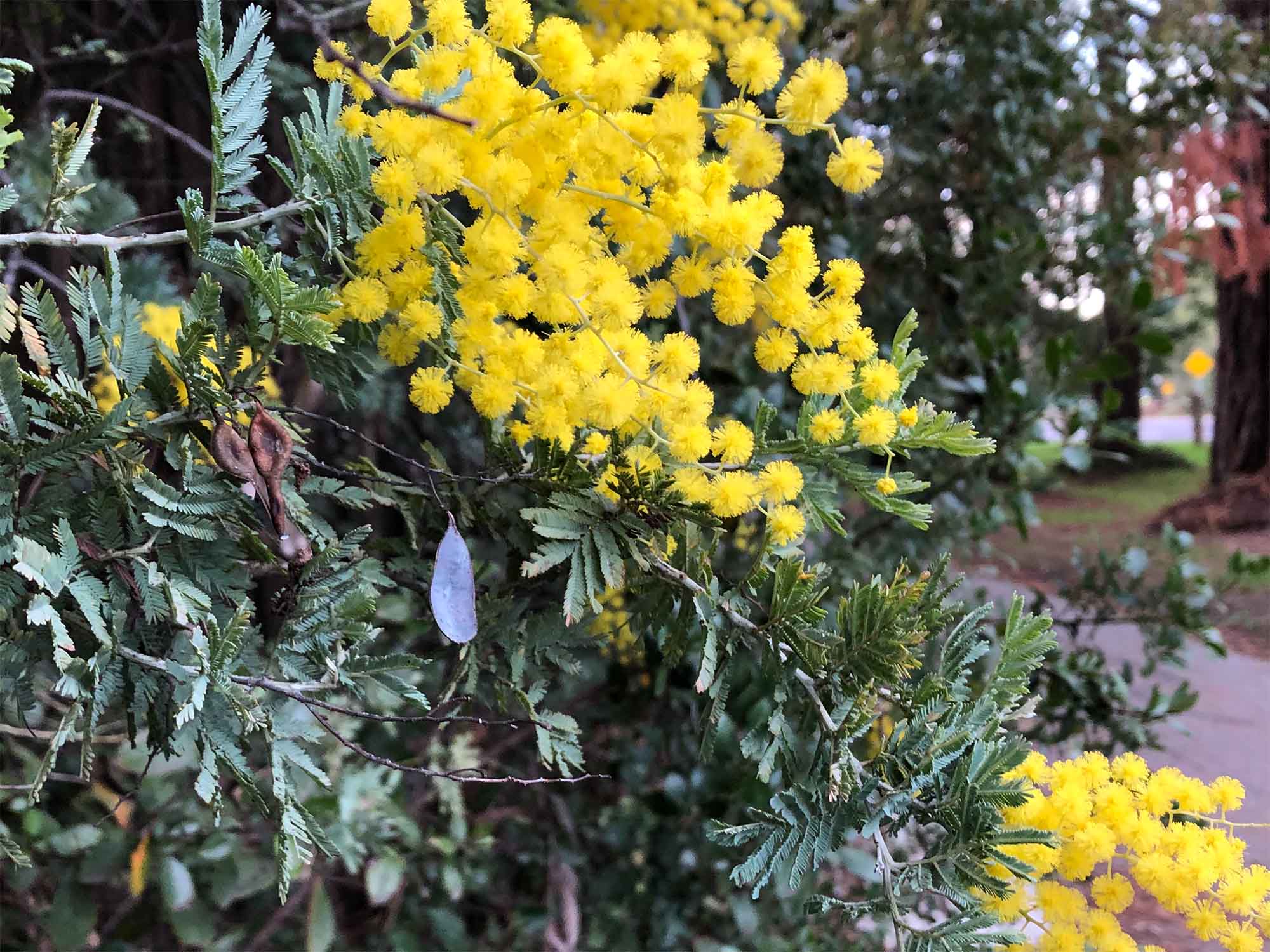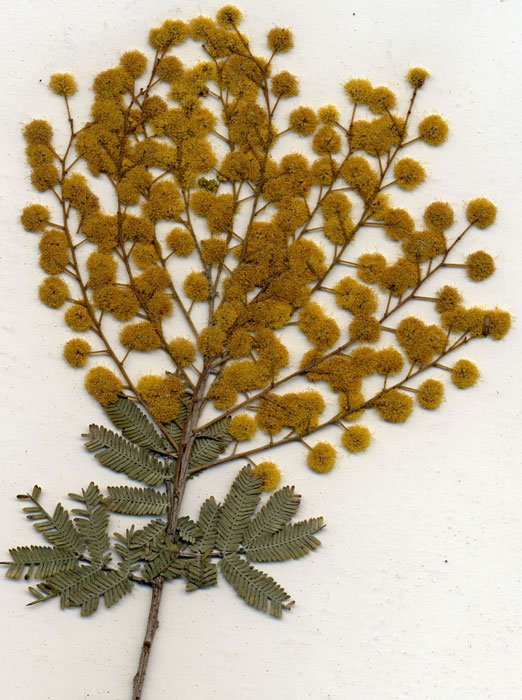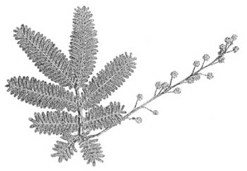Acacia baileyana
 Cootamundra wattle
Cootamundra wattle
An attractive small tree with silvery-gray foliage that is smothered in brilliant yellow blossoms in late January. It can be distinguished from the silver wattle (A. dealbata), which flowers around the same time, by its leaves having a much smaller number of pairs of pinnae (the major segments into which the leaf is divided): 3 to 6, as opposed to silver wattle’s dozen or more pairs. The lowest pair is typically angled backwards (reflexed) and somewhat smaller than the rest, a reduced mirror image of the topmost pair, lending a most appealing outline to this bipinnate leaf. Each pinna is in turn divided into myriad tiny flat pinnules. Looking even more closely, see round nectary glands on the upper surface of the leaf stalk, near the point of attachment of the pinnae.

On campus, none grow as standalone trees. Two are tangled among other trees on the right side of 853 Mayfield Avenue. Another is in the thicket at the northwest corner of the intersection of Peter Coutts Road and Raimundo Way; many leaves on this one have 7 pairs of pinnae, which is rather unusual. A single tree, its low trunk split down the middle, sprawls out on the southwest side of Lagunita, just southeast of the intersection of the paths there (map pin). This one has up to 8 pairs of pinnae. Its floral splendor can be seen from across the lake. A. dealbata hovers near it.
Several more near the intersection of Escondido Road and Blackwelder Court were removed 2017 due to construction. Specimens reported in 2005 at 880 Lathrop Drive and south of The Knoll were removed.
Cultivar ‘Purpurea’ has distinctly lavender-tinged new leaves and bluer foliage. It can be seen in San Francisco, but has not yet graced campus.
Name derivation: Acacia – Greek akis, a sharp point; baileyana – after A.M. Bailey (1827–1915), Australian botanist.
About this Entry: Authored Feb 2025 by Sairus Patel.






